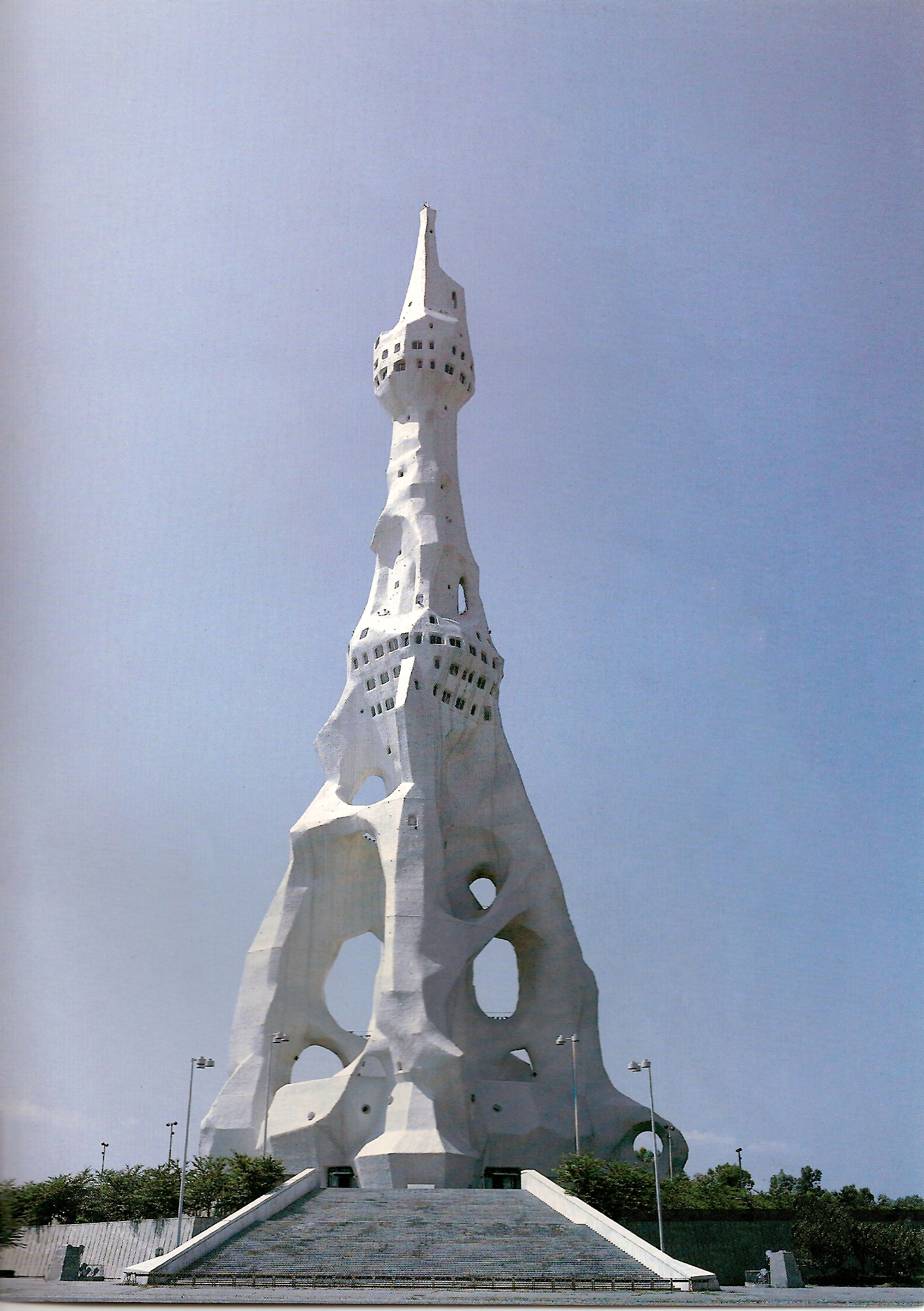|
Bussho Gonenkai Kyōdan representative committee. Following his death in November 2014, his son Yoshikazu Sekiguchi took over as the fourth preside ...
Bussho Gonenkai Kyōdan (佛所護念会教団) is an offshoot of Reiyūkai and branch of Nichiren Buddhism. It was founded in 1950 in Japan by Kaichi Sekiguchi and his wife Tomino Sekiguchi. Its teachings are based on the Lotus Sutra. Ancestor veneration is another important pillar of its religious practice. Its third president was Noritaka Sekiguchi, the son of Kaichi and Tomino Sekiguchi, and a member of the Nippon Kaigi The Right side up ... [...More Info...] [...Related Items...] OR: [Wikipedia] [Google] [Baidu] |
Reiyūkai
, or Reiyūkai Shakaden, is a Japanese Buddhism, Buddhist Japanese new religions, new religious movement founded in 1919 by Kakutarō Kubo (1892-1944) and Kimi Kotani (1901-1971). It is a laity, lay organization (there are no priests) inspired by Nichiren Buddhism, but not affiliated to any particular sect. Reiyūkai considers itself the grandfather of lay-based new religions devoted to the Lotus Sutra and ancestor veneration.Reiyūkai membership currently stands at 5.14 million members, with the majority living in Japan. History In 1920s, during the crisis after the 1923 Great Kantō earthquake and the following economic depression, Kakutaro Kubo begins formulating his philosophy for what is now Reiyūkai. He compiled and published The ''Blue Sutra'' (a collection of texts from the Threefold Lotus Sutra), used by members for recitation practice. In 1930, Reiyūkai was formally inaugurated, Kakutaro Kubo became Chairman of the Board of Directors and Kimi Kotani becomes Presiden ... [...More Info...] [...Related Items...] OR: [Wikipedia] [Google] [Baidu] |
Nichiren Buddhism
Nichiren Buddhism ( ja, 日蓮仏教), also known as Hokkeshū ( ja, 法華宗, meaning ''Lotus Sect'') is a branch of Mahayana Buddhism based on the teachings of the 13th-century Japanese Buddhist priest Nichiren (1222–1282) and is one of the Kamakura period schools. Its teachings derive from some 300–400 extant letters and treatises either authored by or attributed to Nichiren. Nichiren Buddhism generally sources its basic doctrine from the Lotus Sutra claiming that all sentient beings possess an internal Buddha-nature capable of attaining Buddhahood in the current life. There are three essential aspects to Nichiren Buddhism: # The faith in Nichiren's Gohonzon # The chanting of ''Namu Myoho Renge Kyo'' with varying recitations of the Lotus Sutra # The study of Nichiren's scriptural writings, called ''Gosho''. After his death, Nichiren left to both his senior disciples and lay followers the mandate to widely propagate the ''Gohonzon'' and chanting the '' Daimoku'' in ... [...More Info...] [...Related Items...] OR: [Wikipedia] [Google] [Baidu] |
Japan
Japan ( ja, 日本, or , and formally , ''Nihonkoku'') is an island country in East Asia. It is situated in the northwest Pacific Ocean, and is bordered on the west by the Sea of Japan, while extending from the Sea of Okhotsk in the north toward the East China Sea, Philippine Sea, and Taiwan in the south. Japan is a part of the Ring of Fire, and spans Japanese archipelago, an archipelago of List of islands of Japan, 6852 islands covering ; the five main islands are Hokkaido, Honshu (the "mainland"), Shikoku, Kyushu, and Okinawa Island, Okinawa. Tokyo is the Capital of Japan, nation's capital and largest city, followed by Yokohama, Osaka, Nagoya, Sapporo, Fukuoka, Kobe, and Kyoto. Japan is the List of countries and dependencies by population, eleventh most populous country in the world, as well as one of the List of countries and dependencies by population density, most densely populated and Urbanization by country, urbanized. About three-fourths of Geography of Japan, the c ... [...More Info...] [...Related Items...] OR: [Wikipedia] [Google] [Baidu] |
Lotus Sutra
The ''Lotus Sūtra'' ( zh, 妙法蓮華經; sa, सद्धर्मपुण्डरीकसूत्रम्, translit=Saddharma Puṇḍarīka Sūtram, lit=Sūtra on the White Lotus of the True Dharma, italic=) is one of the most influential and venerated Buddhist Mahāyāna sūtras. It is the main scripture on which the Tiantai, Tendai, Cheontae, and Nichiren schools of Buddhism were established. It is also influential for other East Asian Buddhist schools, such as Zen. According to the British Buddhologist Paul Williams, "For many Buddhists in East Asia since early times, the ''Lotus Sūtra'' contains the final teaching of Shakyamuni Buddha—complete and sufficient for salvation." The American Buddhologist Donald S. Lopez Jr. writes that the ''Lotus Sūtra'' "is arguably the most famous of all Buddhist texts," presenting "a radical re-vision of both the Buddhist path and of the person of the Buddha." Two central teachings of the ''Lotus Sūtra'' have been very i ... [...More Info...] [...Related Items...] OR: [Wikipedia] [Google] [Baidu] |
Veneration Of The Dead
The veneration of the dead, including one's ancestors, is based on love and respect for the deceased. In some cultures, it is related to beliefs that the dead have a continued existence, and may possess the ability to influence the fortune of the living. Some groups venerate their direct, familial ancestors. Certain sects and religions, in particular the Eastern Orthodox Church and Roman Catholic Church, venerate saints as intercessors with God; the latter also believes in prayer for departed souls in Purgatory. Other religious groups, however, consider veneration of the dead to be idolatry and a sin. In European, Asian, Oceanian, African and Afro-diasporic cultures, the goal of ancestor veneration is to ensure the ancestors' continued well-being and positive disposition towards the living, and sometimes to ask for special favours or assistance. The social or non-religious function of ancestor veneration is to cultivate kinship values, such as filial piety, family loyalty, an ... [...More Info...] [...Related Items...] OR: [Wikipedia] [Google] [Baidu] |
Nippon Kaigi
The Right side up 6 June 2015, ''.'' is Japan's largest ultra-conservative and far-right non-governmental organization and lobby group. It was established in 1997 and has approximately 38,000 to 40,000 |
Yoshikazu Sekiguchi
Yoshikazu is a masculine Japanese name, Japanese given name. Possible writings Yoshikazu can be written using different combinations of kanji characters. Here are some examples: *義一, "justice, 1" *義和, "justice, harmony" *吉一, "good luck, 1" *吉和, "good luck, harmony" *善一, "virtuous, 1" *善和, "virtuous, harmony" *芳一, "virtuous/fragrant, 1" *芳和, "virtuous/fragrant, harmony" *良一, "good, 1" *良和, "good, harmony" *喜和, "rejoice, harmony" *慶和, "congratulate, harmony" *能一, "capacity, 1" *嘉一, "excellent, 1" The name can also be written in hiragana よしかず or katakana ヨシカズ. Notable people with the name *, Japanese shōgun *, Japanese cyclist *, Japanese rugby union player *, Japanese conductor *, Japanese footballer and manager *, Japanese warrior *, Japanese footballer *Yoshikazu Iwamoto (岩本 由和, born 1945), Japanese musician *, Japanese film director and screenwriter *, Japanese farmer, writer and educator *, Japane ... [...More Info...] [...Related Items...] OR: [Wikipedia] [Google] [Baidu] |
Religious Organizations Based In Japan
Religion is usually defined as a social-cultural system of designated behaviors and practices, morals, beliefs, worldviews, texts, sanctified places, prophecies, ethics, or organizations, that generally relates humanity to supernatural, transcendental, and spiritual elements; however, there is no scholarly consensus over what precisely constitutes a religion. Different religions may or may not contain various elements ranging from the divine, sacred things, faith,Tillich, P. (1957) ''Dynamics of faith''. Harper Perennial; (p. 1). a supernatural being or supernatural beings or "some sort of ultimacy and transcendence that will provide norms and power for the rest of life". Religious practices may include rituals, sermons, commemoration or veneration (of deities or saints), sacrifices, festivals, feasts, trances, initiations, funerary services, matrimonial services, meditation, prayer, music, art, dance, public service, or other aspects of human culture. Religions have sa ... [...More Info...] [...Related Items...] OR: [Wikipedia] [Google] [Baidu] |
Japanese New Religions
Japanese new religions are new religious movements established in Japan. In Japanese, they are called or . Japanese scholars classify all religious organizations founded since the middle of the 19th century as "new religions"; thus, the term refers to a great diversity and number of organizations. Most came into being in the mid-to- late twentieth century and are influenced by much older traditional religions including Buddhism and Shinto. Foreign influences include Christianity, the Bible and the writings of Nostradamus. Before World War II In the 1860s Japan began to experience great social turmoil and rapid modernization. As social conflicts emerged in this last decade of the Edo period, known as the Bakumatsu period, some new religious movements appeared. Among them were Tenrikyo, Kurozumikyo and Oomoto, sometimes called ''Nihon Sandai Shinkōshūkyō'' ("Japan's three large new religions"), which were directly influenced by Shinto (the state religion) and shamanism. The soc ... [...More Info...] [...Related Items...] OR: [Wikipedia] [Google] [Baidu] |
Buddhist New Religious Movements
Buddhism ( , ), also known as Buddha Dharma and Dharmavinaya (), is an Indian religions, Indian religion or Indian philosophy#Buddhist philosophy, philosophical tradition based on Pre-sectarian Buddhism, teachings attributed to the Buddha. It originated in History of India, northern India as a -movement in the 5th century BCE, and Silk Road transmission of Buddhism, gradually spread throughout much of Asia via the Silk Road. It is the Major religious groups, world's fourth-largest religion, with over 520 million followers (Buddhists) who comprise seven percent of the global population. The Buddha taught the Middle Way, a path of spiritual development that avoids both extreme asceticism and hedonism. It aims at liberation from clinging and craving to things which are impermanent (), incapable of satisfying ('), and without a lasting essence (), ending the cycle of death and rebirth (). A summary of this path is expressed in the Noble Eightfold Path, a Bhavana, training of t ... [...More Info...] [...Related Items...] OR: [Wikipedia] [Google] [Baidu] |






